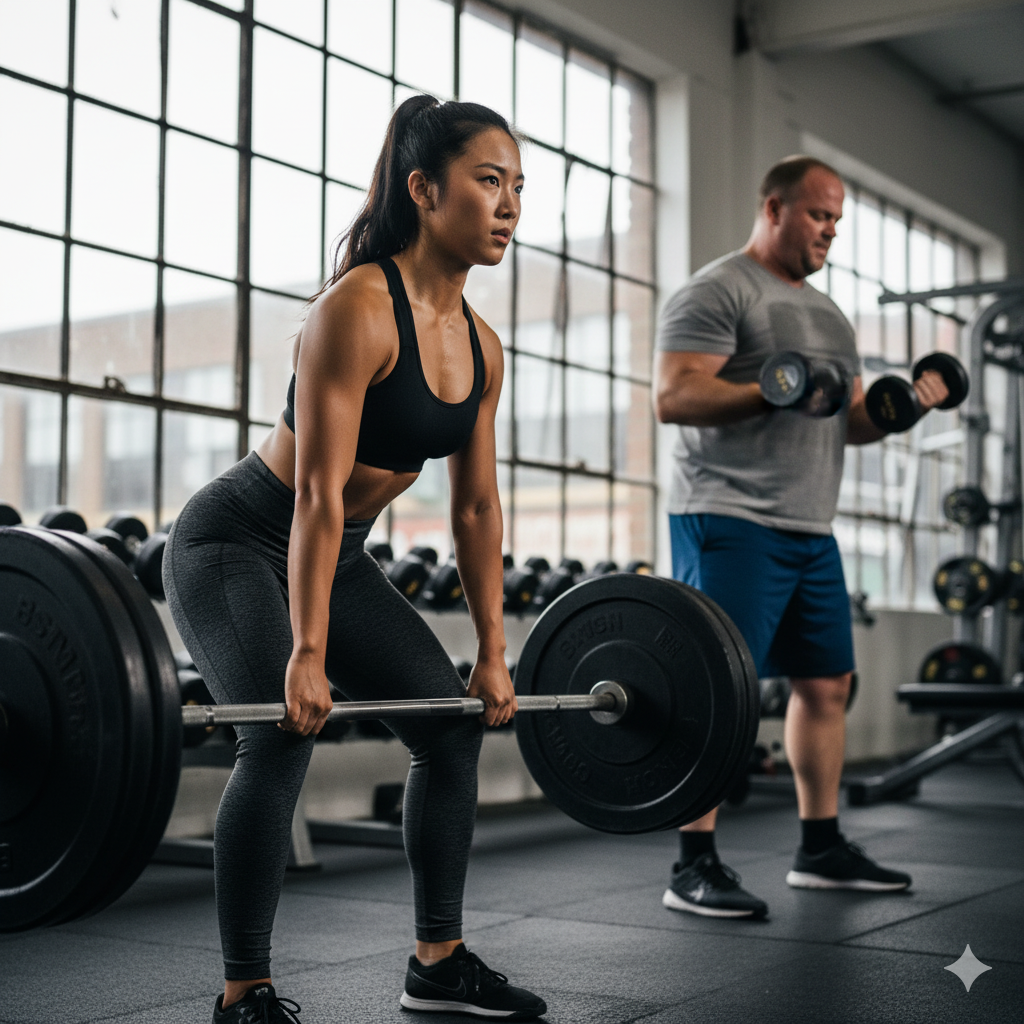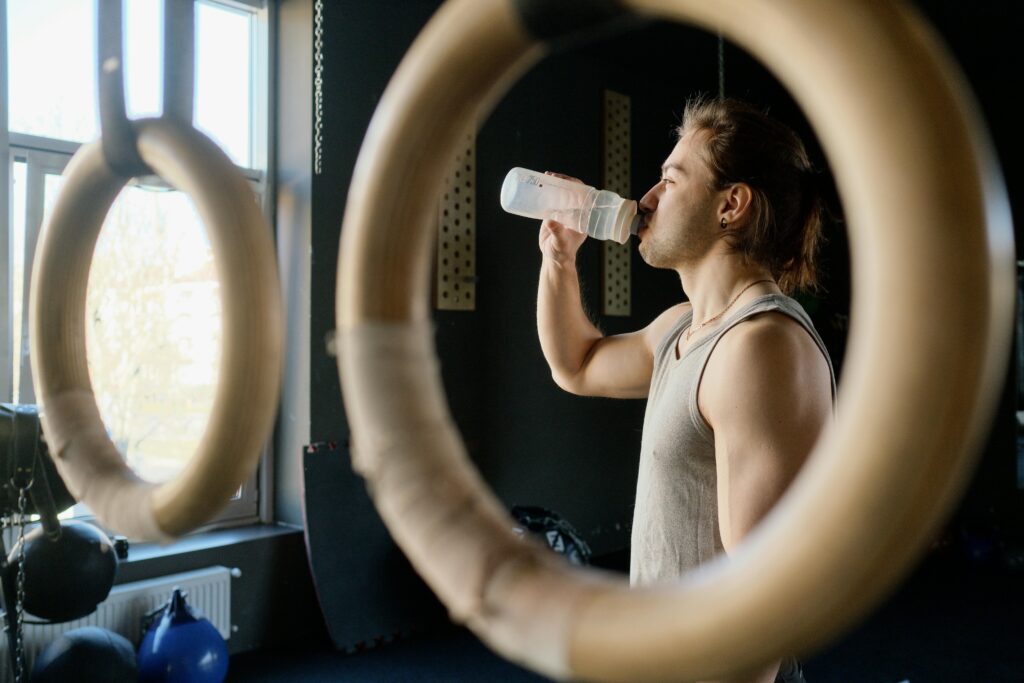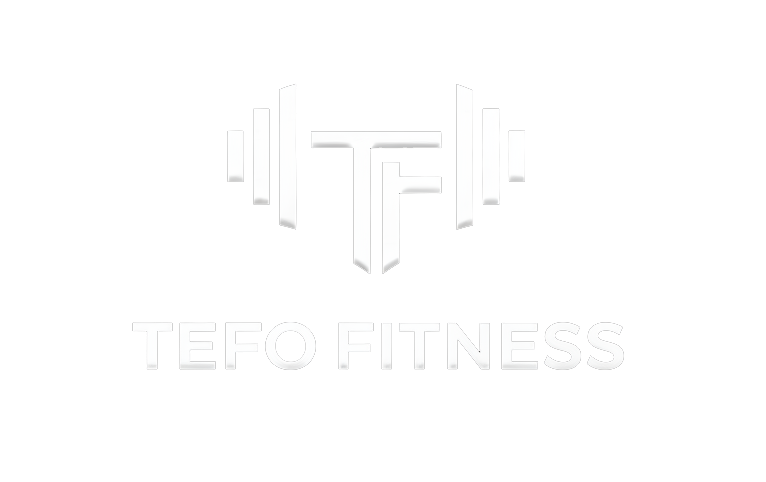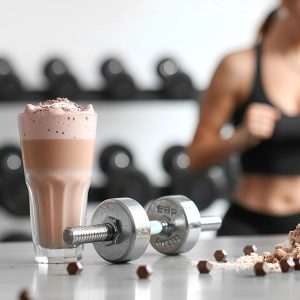
When we decide to start working out, one of the first questions we ask ourselves is: What’s the best type of training to get real results? There are endless options — from lifting weights at the gym to running, CrossFit, yoga, HIIT, or even at-home workouts. With so many choices, it can be overwhelming to know where to start or which one will help you reach your goals more quickly.
In this article, we’ll break down the most popular types of training, what each one does for your body, and how to figure out which approach fits your goals best. Because the truth is, the best workout isn’t about what’s trending — it’s about what works for you.
How to Know What Type of Training Is Best for You
The first step before starting any workout routine is to reflect and ask yourself: What am I trying to accomplish? What is my goal? Why am I choosing to work out? These questions are key to finding the best type of training for you. If you don’t know what you’re training for, it’s harder to stay consistent and build lasting habits.
Once you identify your goal, it becomes easier to choose the right workout style. For example, if your goal is to improve how your body looks—whether that means losing fat, gaining muscle, or both—then resistance training (lifting weights) will give you the best results. If you want to be more active and enjoy a community-driven, competitive environment, CrossFit could be a great fit. Prefer training outdoors and using your own body weight? Calisthenics can help you build muscle and athleticism. And if your dream is to complete a marathon, consistent running will take you there.
At the end of the day, the best training is the one that aligns with your goals and keeps you motivated. Before anything else, take time to define your “why.” Once that’s clear, your training will have purpose, and progress will follow.
Understanding the Different Types of Training
There are so many ways to work out, with various styles, equipment, and resources available, that it can be very overwhelming to choose, even if you have a clear idea of what your goals are. We are going to break down the most popular types of training and what science suggests is the best set of workouts or kind of training for each.
1. Resistance or Strength Training

- What it is:
Resistance training involves using weights, machines, or your own body weight to create muscle tension and promote strength and growth.
- What is it best for:
Building muscle, improving strength, enhancing bone density, and supporting long-term health.
- Key scientific findings:
Research shows that progressive resistance training improves physical performance, movement control, and independence in adults (Liu & Latham, 2009). It also enhances joint range of motion (Afonso et al., 2023) and lowers the risk of significant health conditions. A meta-analysis found that muscle-strengthening activities are associated with a 10–17% lower risk of mortality, cardiovascular disease, diabetes, and certain types of cancer (Momma et al., 2022).
- Summary:
If your goal is to build strength, shape your body, and support longevity, resistance training is one of the most effective and science-backed types of training. The key here is to ensure that you’re using a resistance (whether it’s from weights or machines) that challenges you, and over time, you aim to increase that resistance. If you want a free program, click here to get access to my free downloadable 8-week muscle-building program. It’s intense but effective!
2. Cardio or Aerobic Training (Including HIIT)

- What it is:
Cardio or aerobic training includes activities such as running, swimming, cycling, and others that elevate the heart rate for an extended period. High-Intensity Interval Training (HIIT) is a type of training that alternates between short bursts of effort and recovery periods.
- What is it best for:
Improving cardiovascular endurance, increasing calorie burn, and supporting heart and metabolic health.
- Key scientific findings:
HIIT has been shown to improve both aerobic and anaerobic capacity, as well as metabolic function (Gibala et al., 2021). However, studies show that HIIT is not always superior to steady-state cardio for fat reduction, meaning both can be effective depending on your fitness level and consistency (Nalcakan et al., 2023).
- Summary:
If you want to improve endurance and heart health, incorporating cardio training, whether steady-state or high-intensity, should be part of your routine. So, if your goals require you to have physical endurance, then you know you must include cardio in your training. Which type of cardio? The kind you enjoy and know you can stick to; for instance, I love to play soccer, and I use that as one of my ways to do cardio throughout the week. Now, if you are training to do a specific sport or event, the cardio you do should be in line with that
3. Functional and Calisthenics Training

- What it is:
Functional training focuses on natural movement patterns, including squats, pushes, pulls, and rotations. Calisthenics uses body weight to build control, coordination, and mobility.
- What is it best for:
Developing mobility, coordination, athletic performance, and overall body control.
- Key scientific findings:
Studies have shown that resistance-based and bodyweight exercises improve functional ability and reduce the risk of chronic diseases (Phillips & Winett, 2023). Functional movement training also enhances balance, stability, and flexibility, thereby supporting improved performance in daily activities and sports.
- Summary:
If your goal is to move better, train outdoors, or build athletic strength without equipment, functional and calisthenic training are great choices.
4. Hybrid or Periodized Training

- What it is:
Hybrid training combines multiple styles such as resistance, cardio, and mobility training in a single plan. Periodization refers to adjusting training intensity and volume over time to promote steady progress.
- What is it best for:
Developing complete fitness, avoiding plateaus, and improving overall performance.
- Key scientific findings:
Combining resistance and aerobic training provides greater overall health and performance benefits than doing either one alone (Phillips & Winett, 2023). This balanced approach is beneficial for athletes or individuals seeking to improve strength, endurance, and flexibility at the same time.
- Summary:
If you want balanced, all-around fitness that keeps your body strong and adaptable, hybrid or periodized training is the most effective choice.
The Bottom Line: What Is the Best Type of Training?
At the end of the day, there isn’t one single “best” type of training for everyone. The best workout is the one that helps you move closer to your goals, keeps you consistent, and fits your lifestyle. Some people thrive on resistance training, others love the challenge of HIIT or CrossFit, while some prefer the freedom of running or bodyweight training.
The key is to find what you enjoy and can sustain long-term. A consistent and balanced approach—one that includes strength, cardio, and mobility—will always outperform short bursts of motivation or overly restrictive programs.
So before chasing trends, remember your “why,” train with purpose, and stay consistent. The results will come.
If you’re just getting started and want a clear plan to follow, check out my free 8-week muscle-building program designed to help you train smarter and build lasting strength and muscle mass.
References
Afonso, J., Olivares-Jabalera, J., Andrade, R., Zahiri, A., Hadjizadeh Anvar, S., Goudini, R., Hicks, J. P., Konrad, A., & Behm, D. G. (2023). Resistance training induces improvements in range of motion: A systematic review and meta-analysis. Sports Medicine, 53(2), 251-270. https://doi.org/10.1007/s40279-022-01804-x
Gibala, M. J., Little, J. P., MacDonald, M. J., & Hawley, J. A. (2012). Physiological adaptations to low-volume, high-intensity interval training in health and disease. The Journal of Physiology, 590(5), 1077–1084. https://doi.org/10.1113/jphysiol.2011.224725
Guo, Z., Chen, J., He, Y., Su, P., Wang, M., Li, X., & Zhang, Y. (2023). Effect of high-intensity interval training vs moderate-intensity continuous training on fat loss and cardiorespiratory fitness in the young and middle-aged: A systematic review and meta-analysis. Frontiers in Physiology, 14, 1121197. https://www.ncbi.nlm.nih.gov/pmc/articles/PMC10048683/
Liu, C. J., & Latham, N. K. (2009). Progressive resistance strength training for improving physical function in older adults. Cochrane Database of Systematic Reviews, 2009(3), CD002759. https://doi.org/10.1002/14651858.CD002759.pub2
Momma, H., Kawakami, R., Honda, T., & Sawada, S. S. (2022). Muscle-strengthening activities are associated with lower risk and mortality in major non-communicable diseases: A systematic review and meta-analysis of cohort studies. British Journal of Sports Medicine, 56(13), 755–763. https://doi.org/10.1136/bjsports-2021-105061
Phillips, S. M., & Winett, R. A. (2010). Uncomplicated resistance training and health-related outcomes: Evidence for a public health mandate. Current Sports Medicine Reports, 9(4), 208-213. https://doi.org/10.1249/JSR.0b013e3181e7da73




